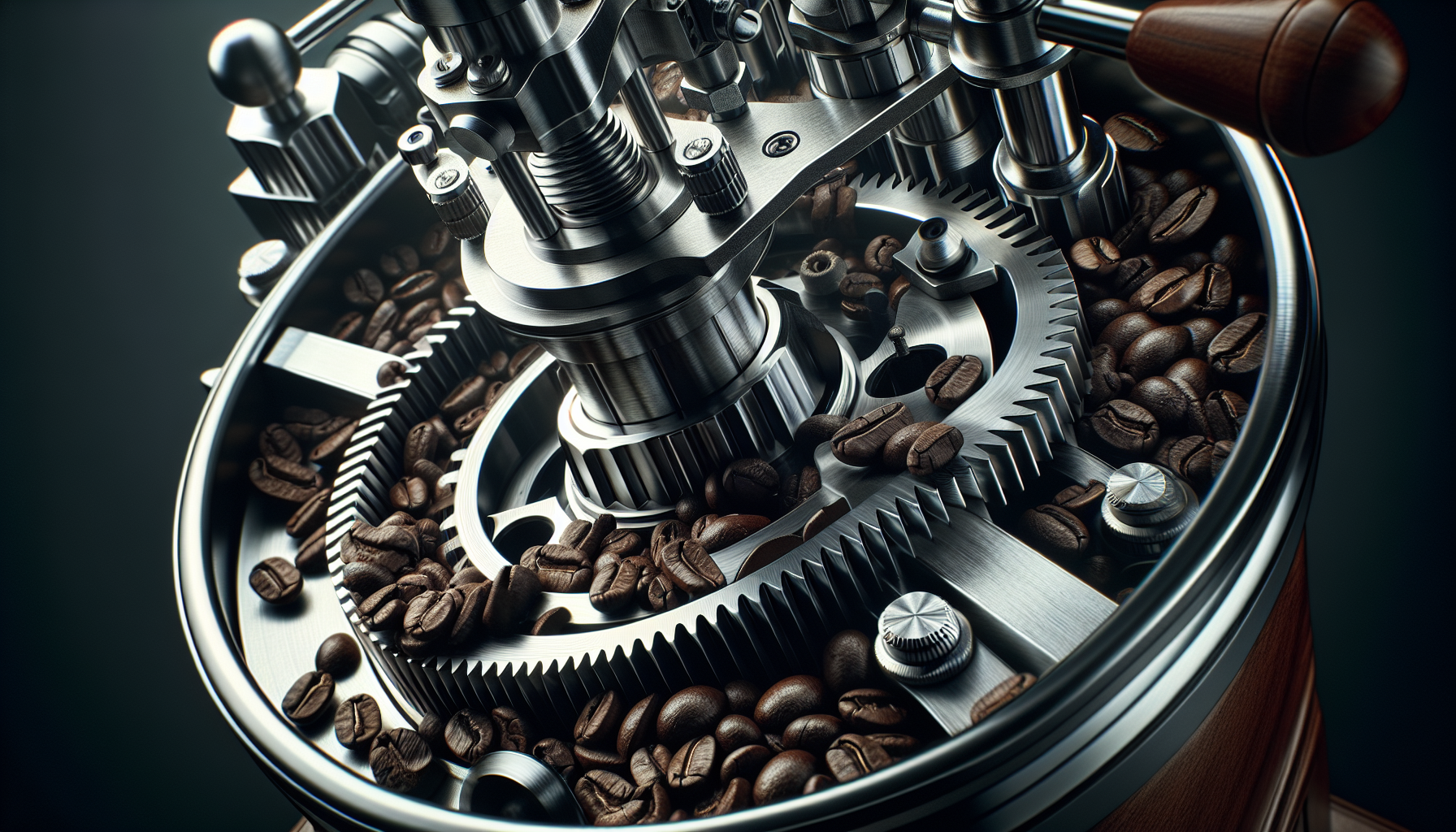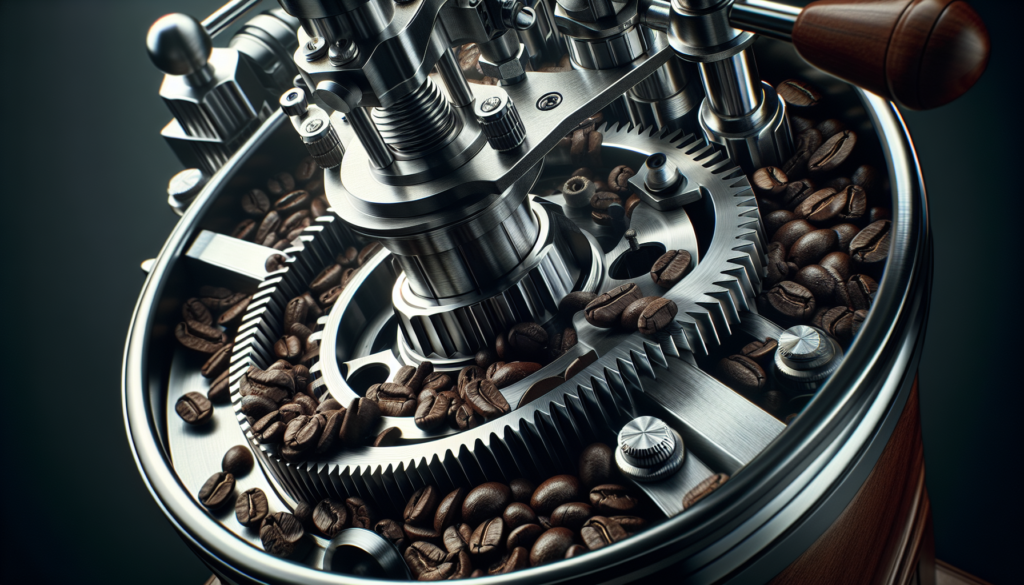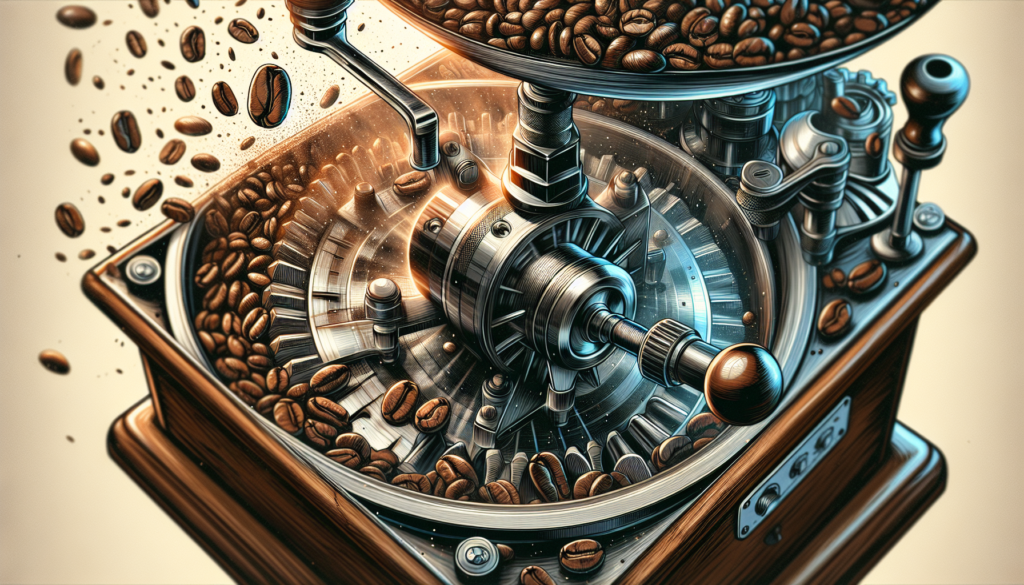
Coffee grinders play a crucial role in bringing out the exceptional flavors and aromas of your morning brew. But have you ever wondered how these magical contraptions actually work? In this article, we will unlock the secrets behind the mechanics of coffee grinders, shedding light on the fascinating journey from whole coffee beans to the perfect ground coffee that fills your cup. So grab a mug, sit back, and prepare to delve into the inner workings of these delightful machines!
Understanding the Mechanics: How Coffee Grinders Work

What is a Coffee Grinder?
A coffee grinder is an essential tool for every coffee lover. It is a device used to finely grind coffee beans to the desired consistency for brewing. Whether you prefer a rich espresso, a smooth pour-over, or a bold French press brew, a coffee grinder is key to achieving the perfect cup of coffee.
The Components
A coffee grinder consists of several key components that work together seamlessly to grind the coffee beans. Understanding these components will give you a better understanding of how coffee grinders work.
1. Hopper
The hopper is the top part of the grinder where you pour the coffee beans. It is usually made of clear plastic or glass, allowing you to see how many beans you have left. Some grinders also come with a hopper that has a built-in lid to preserve the freshness of the beans.
2. Burr or Blade
The burr or blade is the heart of the coffee grinder. It is responsible for grinding the coffee beans. Burr grinders have two metal discs, known as burrs, that rotate against each other, crushing the beans between them. Blade grinders, on the other hand, have a spinning blade that chops the beans into smaller pieces. Burr grinders are generally considered superior as they produce a more consistent grind size.
3. Grind Size Selector
The grind size selector is a feature found in many coffee grinders that allows you to adjust the coarseness or fineness of the grind. This is essential as different brewing methods require different grind sizes. For example, espresso calls for a fine grind, while French press needs a coarse grind.
4. Motor
The motor powers the burrs or blade to grind the coffee beans. It is usually located at the base of the grinder and ensures a smooth and efficient grinding process.
5. Grounds Container
The grounds container collects the freshly ground coffee. It is located below the burr or blade and is easily detachable for convenient coffee transfer.

The Grinding Process
Now that you understand the various components of a coffee grinder let’s dive into the mechanics of how it actually works.
When you pour the coffee beans into the hopper and select your desired grind size, the motor is activated. In burr grinders, the burrs rotate against each other, crushing the beans between them. This crushing action results in a consistent grind size, which is crucial for extracting the optimal flavor from the coffee.
In blade grinders, the spinning blade chops the coffee beans into smaller pieces. The longer you run the grinder, the smaller the particles become. However, it is important to note that blade grinders can produce an uneven grind size, leading to an inconsistent extraction and potentially bitter-tasting coffee.
As the coffee beans are ground, the freshly ground coffee falls into the grounds container below. Once the desired amount of coffee has been ground, you can then easily detach the grounds container and transfer the coffee to your brewing device.
The Importance of Grind Consistency
Grind consistency is key to brewing a perfect cup of coffee. Whether you’re making espresso, drip coffee, or a French press, the grind size directly affects the extraction process. If the grind is too coarse, the water will pass through the coffee too quickly, resulting in weak and under-extracted coffee. Conversely, if the grind is too fine, the water will have difficulty passing through, leading to over-extracted coffee that tastes bitter.
A coffee grinder with burrs is preferred for achieving a consistent grind size. The adjustable grind size selector allows you to customize the grind for different brewing methods, ensuring optimal flavor extraction. Additionally, burr grinders produce less heat during the grinding process, which helps preserve the delicate flavors and aromas of the coffee.
Tips for Using a Coffee Grinder
To get the best results from your coffee grinder, keep these tips in mind:
- Clean your grinder regularly to prevent the buildup of coffee oils and residue that can affect the flavor of your coffee.
- Use fresh, whole coffee beans for the best taste. Grinding just before brewing ensures maximum flavor and aroma.
- Experiment with different grind sizes to find the perfect one for your preferred brewing method.
- Avoid grinding coffee in large quantities as it can result in stale-tasting coffee. It’s best to grind only what you need for immediate use.
- Consider investing in a burr grinder for better grind consistency and flavor retention.
By understanding the mechanics of how coffee grinders work and following these tips, you can elevate your coffee brewing experience and enjoy a delicious cup of coffee every time. So go ahead, grab your favorite beans, and let your coffee grinder work its magic!